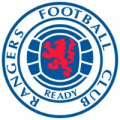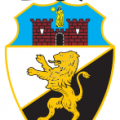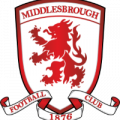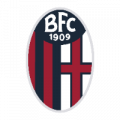Today would have been legendary manager Graham Taylor’s 76th birthday.
Adored everywhere he went and by everyone he met, Taylor’s death in 2017 shocked and saddened the footballing world. Always renowned as a kind hearted and funny man, he managed Lincoln City, Watford, Aston Villa, Wolves and the England national team in his long career. He managed both the Hornets and the Villans twice, ending his career at Villa Park in 2003.
Humble beginnings
Despite having a relatively short playing career, Taylor still managed to make over 300 appearances as a full back. He dropped out of school aged 18 to join Grimsby Town as a professional player after previously playing for Scunthorpe United as an apprentice.
He had a long career with the Mariners, making 189 appearances over six years before joining fellow eastern outfit Lincoln City. He made 150 appearances for the Imps before picking up a severe hip injury aged just 27.
Taylor was immediately given a position on the coaching staff at Sincil Bank following his retirement, becoming the youngest ever FA registered coach at the time. Following the departure of David Herd as manager in December 1972, he became the youngest manager in the Fourth Division by becoming his replacement.
His time at Lincoln was successful, but much of it was spent building for success in the future. He guided the Imps to unspectacular 10th and 12th placed finishes in his first year and a half in charge before coming within inches of promotion in 1975. Taylor and Lincoln came back swinging in the 1975-76 season, breaking the league records for points, most wins and least defeats at the time. Following a ninth placed finish in the Third Division, he was approached by a celebrity to take the job at Vicarage Road.
Rocket Man
Despite interest from West Bromwich Albion, who were a First Division side at the time, Taylor chose to drop back down to the fourth tier to take the reins at Watford.
Recently bought by celebrity singer Elton John, the Hertfordshire club believed they pulled off a coup with the appointment of Taylor due to the massive amount of hype and interest in him at the time. For a Lincoln comparison, the hype around Taylor was greater than that around Danny Cowley after he took Lincoln to a National League title and an FA Cup quarter final in 2017.
In short, John was absolutely right in thinking this. Immediately, the club were promoted back into the third tier after a spell in the fourth. The goals of Ross Jenkins brought Taylor to within four points of breaking his own record of 74 points he set with Lincoln just two years earlier. They were back in the Third Division, but not for long. Jenkins bagged another 29 goals as the Hornets were promoted again.
Watford had achieved back-to-back promotions to the Second Division, missing out on the title by a single point to Shrewsbury. On a melancholy note for Taylor, his former side Lincoln were relegated in bottom place back down to the Fourth Division. It was a difficult first season in the second tier, coming just two places above the relegation zone though they were eight points clear of the drop. The 1980-81 season saw an improved finish of ninth, before Watford’s rapid ascent to the First Division was confirmed in 1982 with a second placed finish.
Watford and Taylor finished some distance behind champions Luton Town, coming eight points behind the Hatters, but they were regardless a First Division team at last. Just five years earlier, they were lumbering in the basement of English football. Now, they were to mix in the same division that had just produced six European Cup winners in a row.
In the typical Graham Taylor fashion, Watford stunned the league in their first season in the top flight. Despite being newcomers to the league, Watford finished in a remarkable second place and qualified for the UEFA Cup, albeit 11 points behind league winners Liverpool. For context, they finished higher than Nottingham Forest and Aston Villa who had won three of the last four European Cups between them.
Watford’s first European adventure went rather well considering they dropped to 11th in the league. They beat German outfit Kaiserslautern in the first round before facing Levski Spartak in the second round. They beat the Bulgarians but lost to Czech side Sparta Prague 7-2 on aggregate in the third round. However, they went on another remarkable run to the FA Cup final in 1984. They beat Luton, Charlton, Brighton, Birmingham City and finally Plymouth before meeting Everton in the final. Sadly, for Watford, goals from Graeme Sharp and Andy Gray were enough to give Everton a 2-0 win at Wembley.
The 1984-85 season saw another 11th placed finish, before dropping to 12th the next season. In Taylor’s final season in Hertfordshire, he guided the Hornets to a ninth placed finish and an FA Cup semi-final, this time losing to Tottenham. Watford were again moving forward, but he shocked the nation by his decision to leave the Hornets after a decade to drop down to the Second Division.
Becoming a Lion
Despite winning the European Cup in 1982, off-pitch issues combined with poor managerial appointments from owner Doug Ellis saw Aston Villa relegated in 1987.
Villa had sacked manager Billy McNeill and were looking for an inspirational figure to turn their desperate situation around. Naturally, their number one target was Graham Taylor. Despite being just 42, Taylor had aspirations of becoming England manager and thus decided to prove himself at a third club to show that Watford wasn’t just a fluke. He chose to take a gamble on Villa, despite Ellis having a reputation for sacking good managers too early.
Taylor informed Elton John of his intention to join Villa and the owner obliged, not even asking for compensation. In return, Ellis made a £100,000 donation to an AIDS research charity. In his explosive first AGM meeting, Taylor famously warned Ellis not to interfere as he had with so many other managers. He described the club as a “shambles” and told the shareholders present, most of whom were fans, “if this b*****d clips my wings I’ll give him a f*****g heart attack” while pointing to Ellis. This was met with thunderous applause from the fans present.
He immediately brought in a raft of new signings to overhaul the squad, including striker Alan McInally from Celtic who would be signed by Bayern Munich two years later. It was a tough ask for Villa to return to the top flight at the first time of asking, but they just about managed it. A draw with Swindon Town on the final day meant Villa pipped Middlesbrough to second place on goals scored. It was a remarkable achievement given Villa’s poor home record (coming 16th out of 24 teams for home form), but they were back in the top flight.
It was a season of consolidation for Villa’s first season back in the top flight, barely avoiding relegation by a point at the expense, yet again, of Middlesbrough. However, Taylor’s third and final season at Villa was by far his best.
Despite being lucky to stay in the league, Villa remarkably finished second in the top flight. The feat wasn’t achieved through fantastic attacking performances, but more through a brick wall of a defence. The summer of 1989 saw the arrival of Paul McGrath from Manchester United. The Irishman was later nicknamed ‘God’ by the Villa faithful due to his consistently brilliant performances, but that all started under Taylor.
Villa conceded just 38 goals all season long, just one more than league winners Liverpool and nine less than third placed Tottenham. It was a wonderful season for the Villans, and it landed Taylor his dream job.
From one lion to three
Taylor was appointed as England manager in the summer of 1990, but it wasn’t exactly a happy spell.
He faced immediate opposition from the media, with many criticising the appointment as he was seen to be too close to the traditional English ‘route one’ tactic. He led the Three Lions to qualification for Euro ’92, but the critics wouldn’t be swayed by the end of the tournament.
England were drawn in a group with Sweden, Denmark and France. This would be difficult enough in normal circumstances, but this was in the era of glittering Scandinavian sides. While the likes of Henrik Larsson were some way off for Sweden, they still had Parma’s Thomas Brolin, Arsenal’s Anders Limpar and a host of domestic talent. Denmark had Peter Schmeichel, Brian Laudrup and Flemming Povlsen in their squad.
However, England still had a more than capable squad of their own. Taylor knew David Platt from Villa and played him alongside the likes of Stuart Pearce, Gary Lineker, Alan Smith and a young Alan Shearer, but it wasn’t enough. England drew their first two games against Sweden and France 0-0 before Brolin’s 82nd minute goal gave Sweden a 2-1 win over the Three Lions. They finished bottom of the group.
England had a difficult qualification campaign for the 1994 World Cup. They started with a draw with Norway but bounced back with two wins against Turkey and a battering of San Marino. Taylor showed his human side yet again against San Marino, confronting a fan who racially abused John Barnes.
England’s campaign culminated in a match against the Netherlands, with England needing a win to qualify. Ronald Koeman scored a late winner in a 2-0 win for the Dutch, despite using his arm for the goal and the fact that he arguably should have been sent off earlier in the match. England had one more chance to qualify against San Marino but were 1-0 in 8.2 seconds thanks to a goal from a computer salesman. England won 7-1, but as the Dutch beat Poland the Three Lions missed out.
Taylor didn’t have the best media image, with the Cutting Edge documentary series and the infamous ‘Turnip Taylor’ headline in the Sun contributing to his downfall. After the failure to qualify for the 1994 World Cup, Taylor was sacked.
After England
Taylor returned to club football with Wolves in 1994, replacing Graham Turner as manager. He took Wolves to a Division One (now called the Championship) play-off in the 1994-95 season as well as an FA Cup quarter final, but he resigned after just four wins in 16 games in the 1995-96 season.
He returned to Watford alongside returning owner Elton John in 1996. At first, he was General Manager, but appointed himself as First Team Manager and put then boss Kenny Jackett on the coaching staff due to boredom. The Hornets were in the third tier at the time and Taylor delivered back-to-back promotions again to reach the Premier League. However, they were relegated after one season and finished ninth in the second tier. Taylor decided to retire there.
However, he was invited to join the board at Aston Villa by Doug Ellis with a view to replacing John Gregory as manager. He returned to the dugout in February 2002 but retired again 15 months later due to differences with Doug Ellis leaving the club 16th in the Premier League.
He later returned to hometown club Scunthorpe United as vice-president as well as joining BBC Radio Five Live as a pundit. Taylor, as he always did, oversaw two promotions at Scunthorpe for the club to return to the Championship.
He joined Watford as a non-executive director in 2009 and was later appointed chairman. He resigned as chairman in 2012 but held the title of honorary life president until his death in 2017. The club renamed the Rous stand to the Graham Taylor stand in his honour in 2014.
He spent his final years at home with his wife of 52 years, Rita Taylor, until he tragically passed away from a heart attack on January 12 2017. Despite never winning the top flight or any real honours above the Second Division, he touched every player he ever managed with his humanity and his quality as a manager. Watford simply wouldn’t exist as a top-flight presence without him and despite only spending four full seasons at Villa, he is still adored by the Villa faithful.
He may be gone, but his legacy will never be forgotten.









































